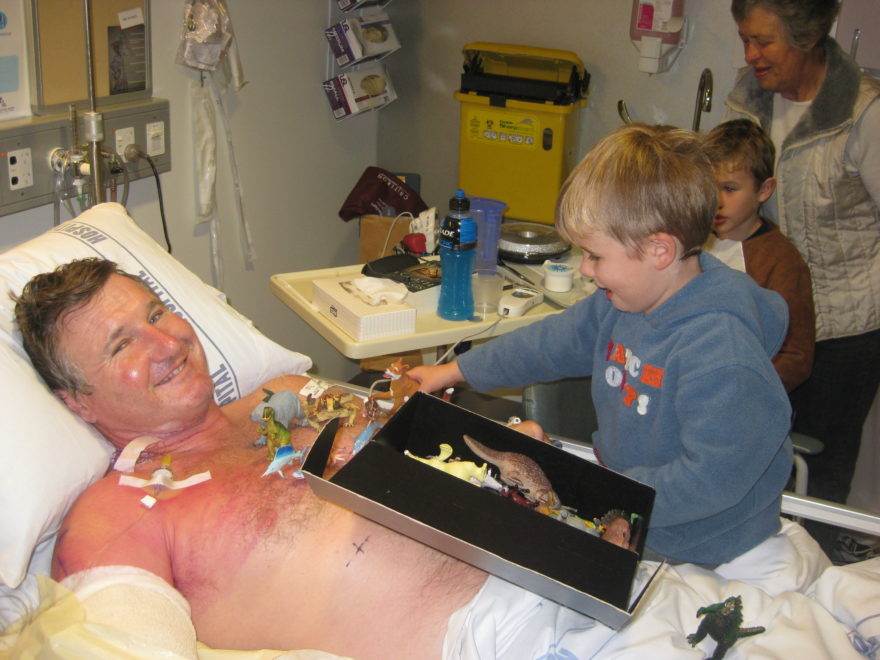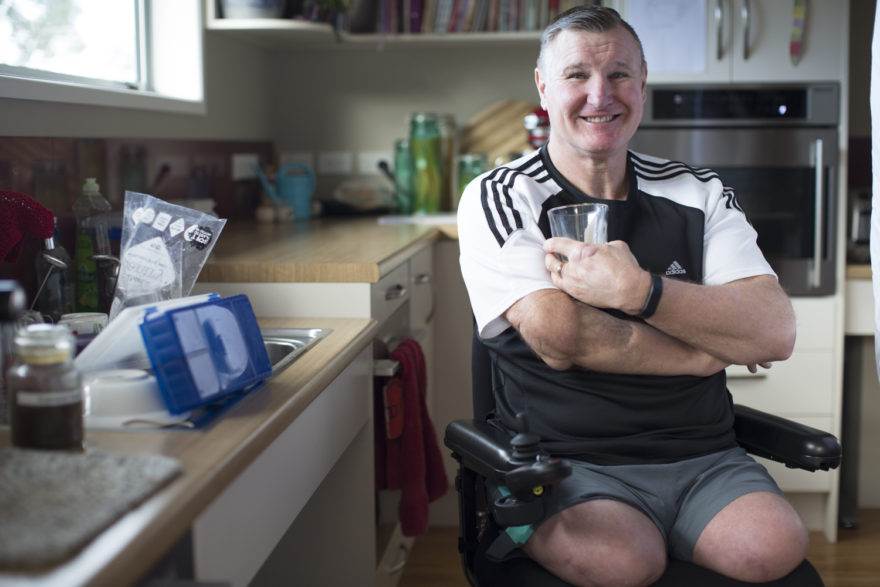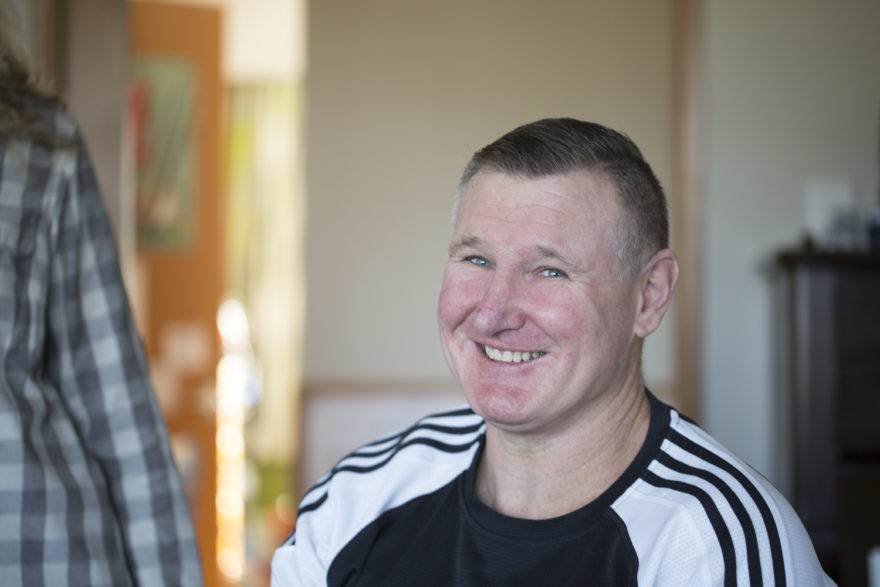Ian Winson has always been resilient. Growing up in the war zone of Rhodesia, he recalls an awesome childhood. But Ian’s resilience was put to the ultimate test in June 2011, and he has relied on his “inner grit” every day since.
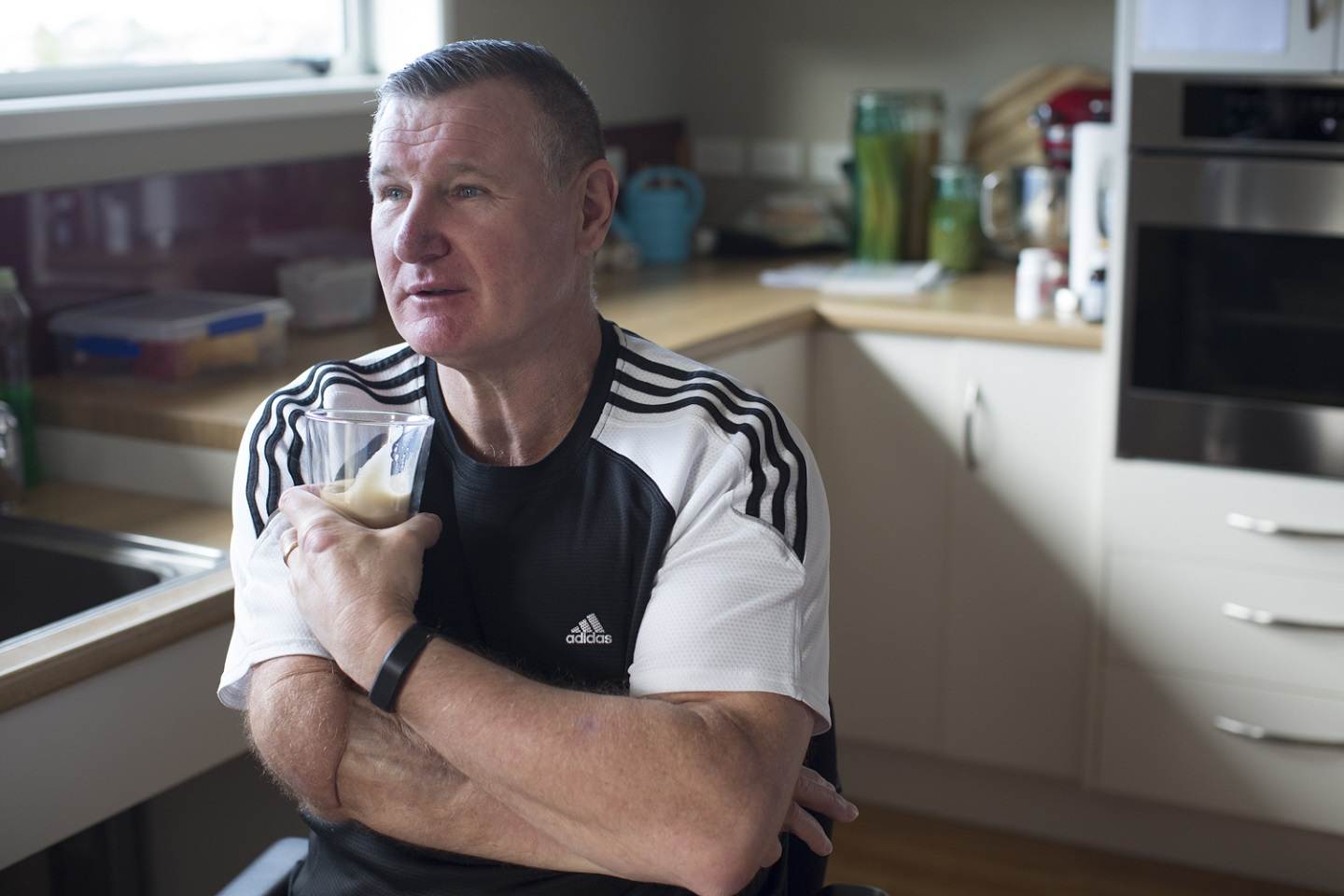
I wouldn’t be here without the care I received at Auckland City Hospital.
It was a Saturday morning and engineer Ian was helping his short-staffed team do a routine pipe inspection in Onehunga when the gas explosion occurred. Killing one colleague instantly, the blast fired Ian like a bullet from a gun, throwing him over 75 metres and leaving him fighting for his life.
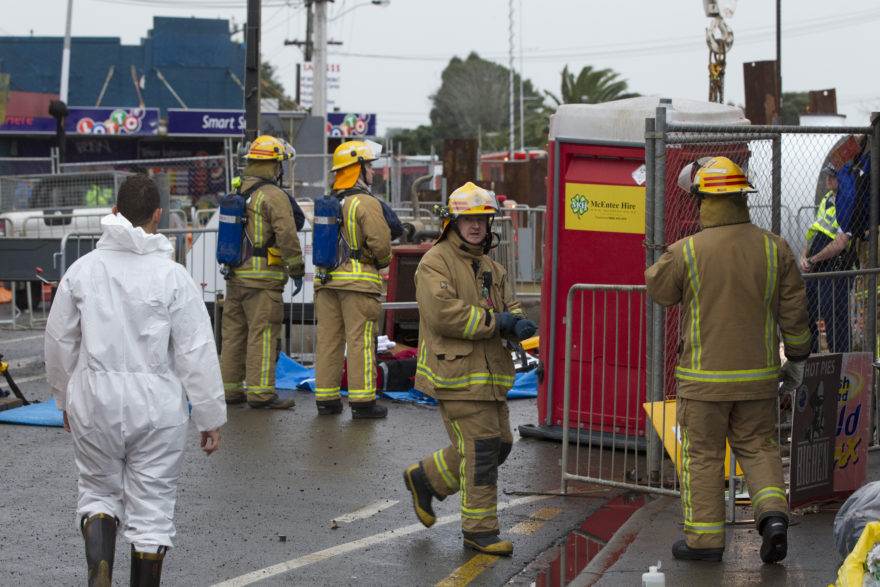
Paramedics were quick to the scene and took Ian to Auckland City Hospital, where Intensive Care Specialist Dr Tony Smith was on duty and Trauma Service Clinical Director Professor Ian Civil was doing his rounds.
Ian was almost dead. His body was in a state of shock and his legs were gone – blown off by the explosion. The former triathlete and Ironman was sedated and in the operating theatre within the hour, where a team of 15 operated for two hours, saving Ian’s life before taking him to the Critical Care Unit (CCU).
While the incident was making international headlines, Ian’s wife Katherine was arriving home from their oldest son’s soccer game, unaware her life was about to be turned upside down. Katherine was taken by Police to Auckland City Hospital, where family started to gather throughout the day, and where the scale of Ian’s injuries began to unfold.
Their lives were forever changed.
The first operation had gone exceptionally well, and after 12 hours of dedicated one-on-one care in the CCU, Ian was stable enough to survive another operation. Professor Civil said Ian was lucky to be alive, and only survived because he was physically fit and strong: “The fitter you are, the better you respond to anything, including surgery.”
Ian woke two days after the explosion, when he learned what happened and started coming to grips with the extent of his injuries. “I can’t remember the first couple of weeks as I was heavily sedated, intubated and on a respirator, which was beautiful for me, but not for Katherine. She is the cornerstone of our family.”
Katherine recalls, “I was purely in survival mode. On day two, we still didn’t know if Ian was going to live, and I was feeling totally overwhelmed by what might happen. But we had a family meeting with Dr Smith, who explained everything about Ian’s injuries, from one end of his body to the other. That run-down was so helpful, and I was so touched he’d do that for us. There was an overwhelming amount of information to try to comprehend.
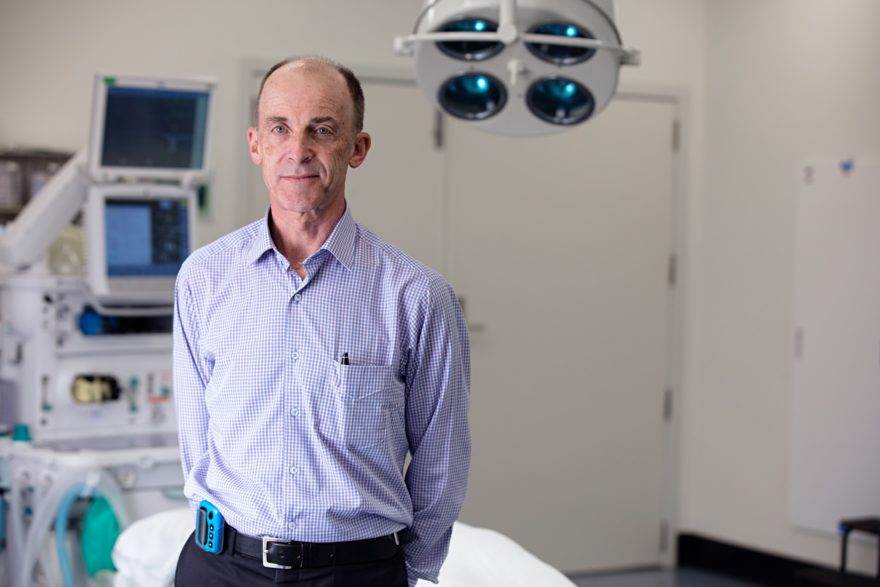
“For the first two weeks, Ian was in the operating theatre every day, and all the surgeons would come out and tell me all the things they’d done for him. Professor Civil was a saint, and everyone in the CCU was ‘out of this world’ and so supportive. They did so much more than I ever would have expected, and it was always a big relief to get to the hospital each day and see how much they’d cared for Ian.”
As well as facing life without both his legs, Ian had an obliterated right elbow, a badly broken left arm, a neck fracture and a traumatic brain injury. He had a finger surgically removed and underwent multiple skin grafts. Orthopaedic Surgeon Mr Clayton Brown put Ian’s shattered arm back together, and Reconstructive Plastic Surgeon Dr Meredith Simcock performed Ian’s hand operations and skin grafts, with Ian calling her his “guardian angel”.
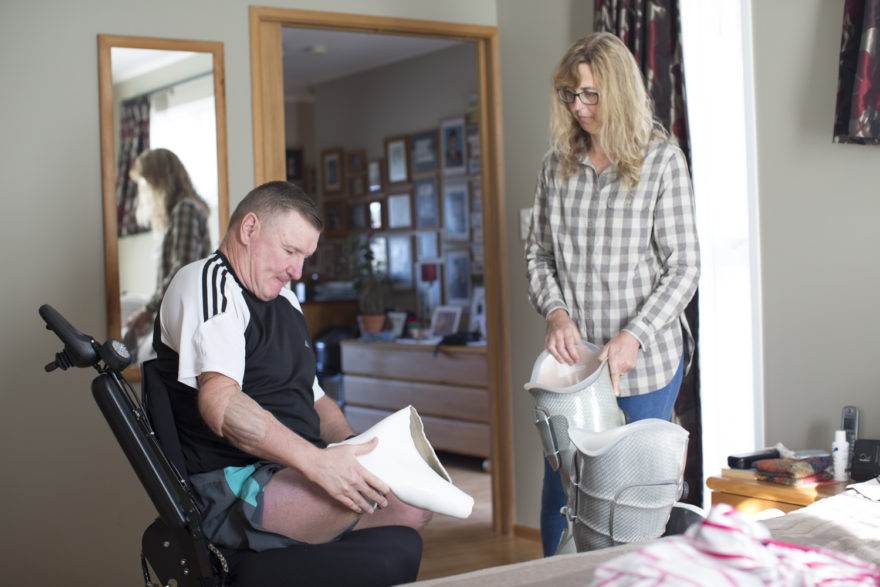
Eight years on, an emotional Katherine still gratefully recalls the teams at Auckland City Hospital, especially the trauma team and CCU nurses. “They went above and beyond caring for Ian. He had wrap-around care, day and night, and they were absolutely incredible with me. They would brush Ian’s hair and shave him, so he always looked immaculate. They were fantastic.”
Ian agrees, saying he couldn’t fault the nursing he received in CCU or on Ward 41, where he moved after a few weeks: “I remember the night staff wheeling my bed into the lounge each night to watch Wimbledon. There was such continuity in the people looking after me, and being in-and-out of theatre so much, I got to know the theatre staff, which was cool. They treated me with so much care and reassured me that everything was going to be great.”
Ian says he felt so comfortable at Auckland City Hospital, he didn’t want to leave. “I was so well looked after, and I was really happy on Ward 41. Even when I was strong enough, I didn’t want to go to the rehab facility, so luckily they let me stay another week.”
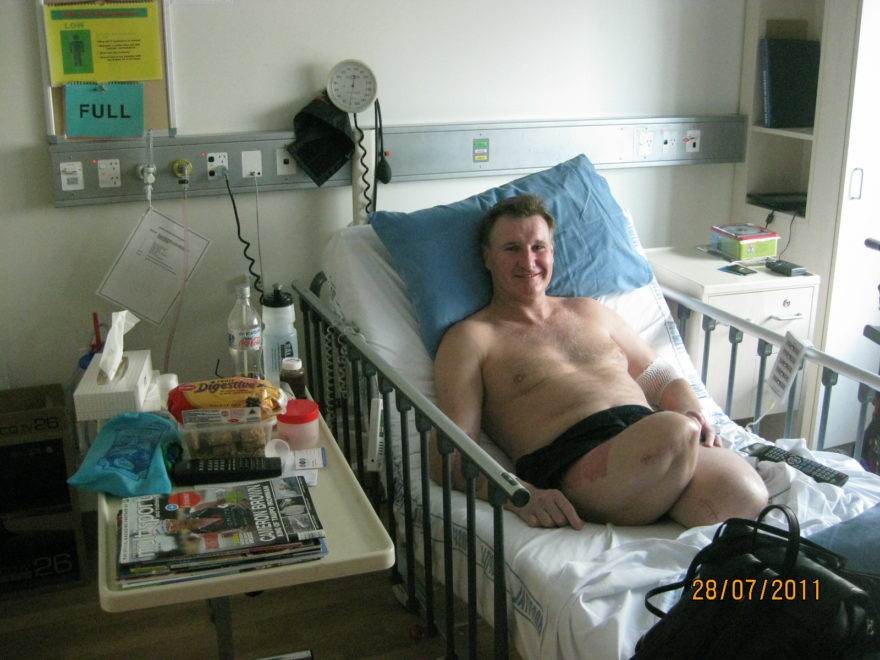
Within eight weeks of the incident, Ian moved to Health New Zealand – Auckland’s Rehab Plus, where he stayed for the next three months. “As soon as you’re able to get up and about, everyone in hospital gets you moving, but I had to relearn everything. It was a mentally debilitating period. When it comes to walking on prosthetics it’s a mental game, not a physical game, but your body still has to be strong.”
Ian finally went home in October, nearly five months after the incident, facing a reality that was worlds apart from the future he’d planned.
In the eight years since the incident, Ian has had nearly 30 operations, most with Auckland City Hospital. “I’ve had so many operations. I remember coming back to Auckland City Hospital in 2014 and all the resus team knew me, which was nice. It gives such a feeling of comfort to see familiar faces and feel so welcome. I know I wouldn’t be here without the care I received at Auckland City Hospital.”
Despite what Ian lost, he chooses to focus on what he has: “I’m not the victim. I have so much to be grateful for, and I’ve always just got on with it. I could be angry, but who’s that going to help?”
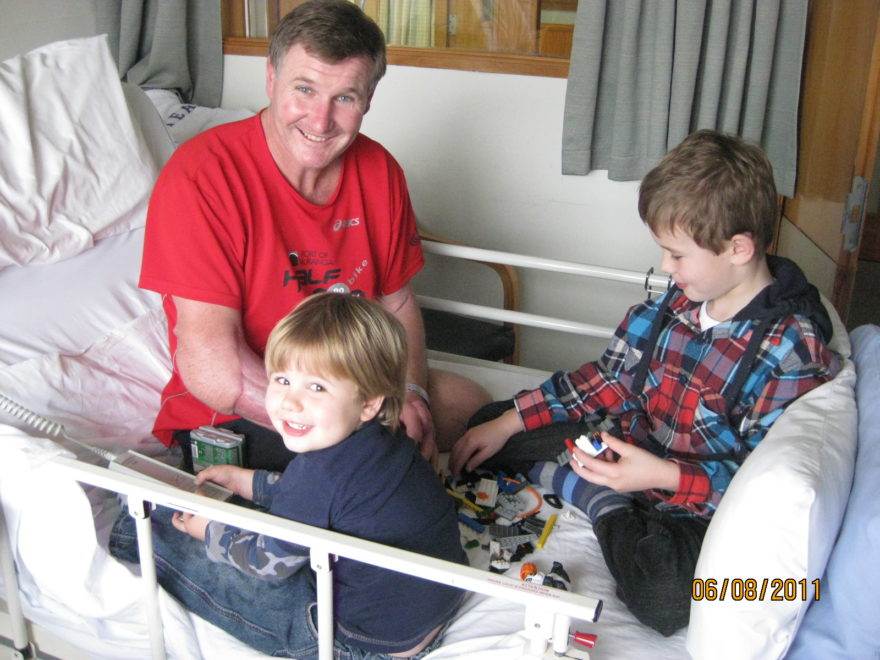
Ian and Katherine have two sons, 15-year-old Josh and 10-year-old Ethan. “I’d give anything to go for a run with my sons. It’s frustrating we can’t be active and play like we used to. We build lots of Lego, which is something we can do together, and I was determined to build the tree house I’d promised them – so I did.”

Ian has also never lost his passion for long-distance running. In 2015, Ian finished the New York Marathon, using prosthetics and he plans to do it again. Despite his incredible attitude and achievements, Ian insists, “I’m not an inspiration. I’ve always just wanted to do normal things like mow the lawns.
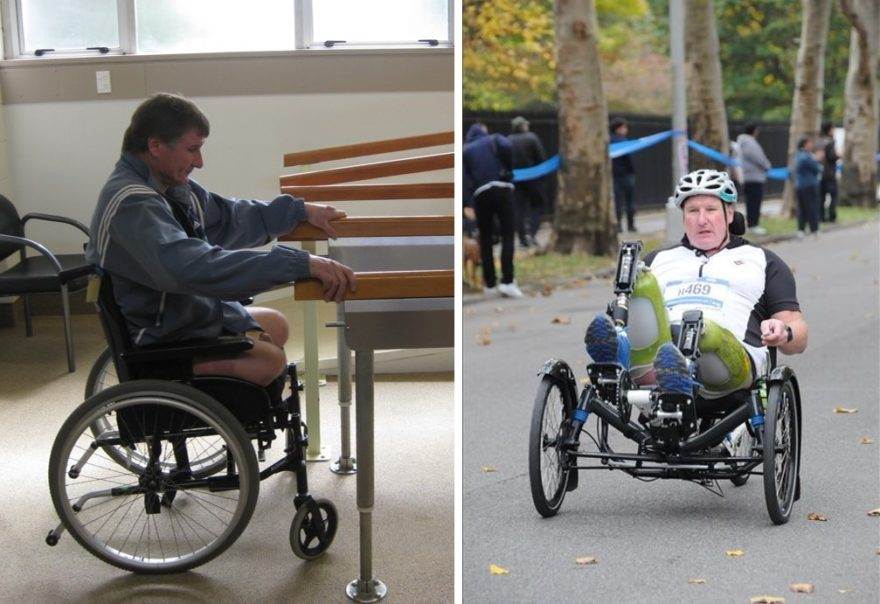
“Nobody thought I’d be able to do the things I can do today. I’ve made much more progress than some people with lesser injuries, and I hope my experience can help others get ahead somehow.”
Through donations, trauma patients at Auckland City Hospital can receive even better care and access to world-class technology and resources, which can improve their outcomes and transform their lives.
“Our donors are the power behind advancements and innovations that wouldn’t otherwise be possible.”
Edited extracts taken from ‘Never Give Up’ by Ian Winson (with Steve Kilgallon). Published by Penguin NZ. © Ian Winson 2016. Available nationwide or online here.
You can make a
difference.
Be a supporter for patients in our hospitals and fund the innovation that saves lives.
